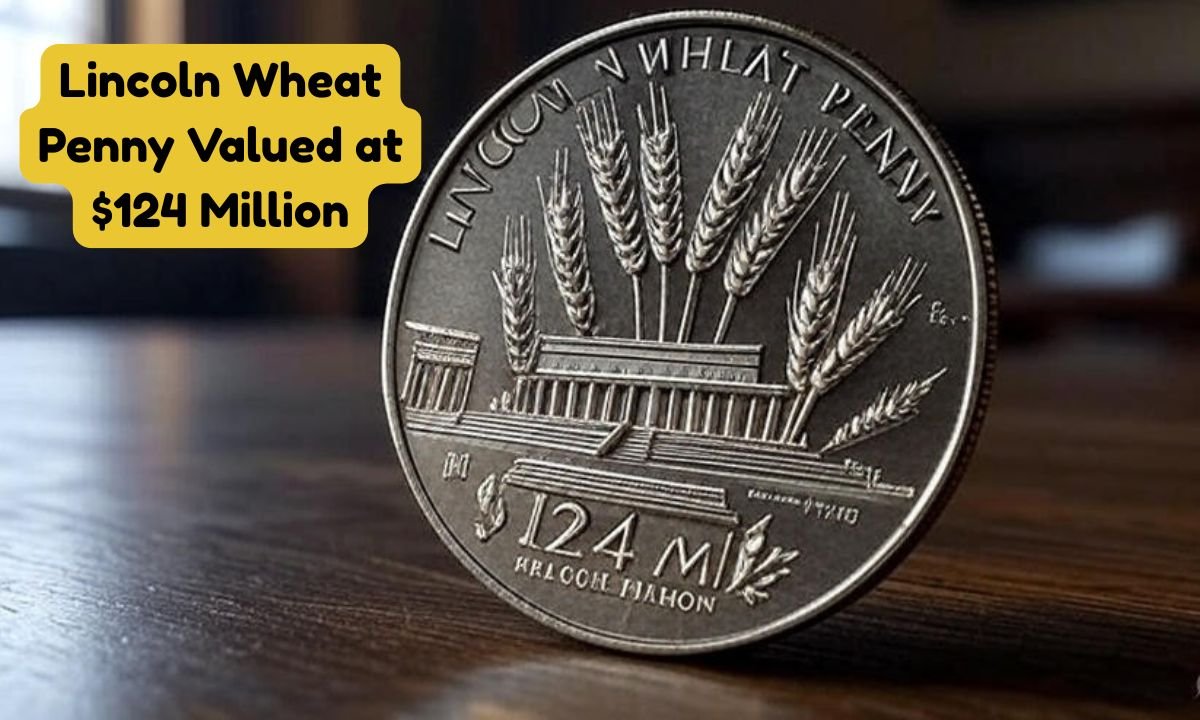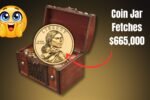Imagine digging through your spare change and finding a penny that could make you a millionaire overnight. Sounds like a fairy tale, right? Well, hold onto your coin jar, because the Lincoln Wheat Penny, valued at a jaw-dropping $124 million, might still be hiding in plain sight. This tiny piece of copper could be sitting in your wallet, piggy bank, or even under your couch cushions. Let’s dive into the fascinating story of this legendary coin and why it’s got collectors buzzing with excitement.
What Makes the Lincoln Wheat Penny So Special?
The Lincoln Wheat Penny isn’t just any old coin. First minted in 1909 to celebrate Abraham Lincoln’s 100th birthday, it was the first U.S. coin to feature a real person’s face instead of a symbol like Lady Liberty. Designed by Victor David Brenner, the penny has Lincoln’s profile on one side and two wheat stalks on the back, earning it the nickname “Wheat Penny.” These coins were made until 1958, and billions of them are still out there. Most are worth just a cent or two, but a few rare ones? They’re like finding a golden ticket in a candy bar!
The real magic happens with specific versions of this penny, especially those with rare minting errors or unique features. Among them, one stands out like a diamond in a coal mine: the 1943 copper Lincoln Wheat Penny. This coin is so rare and valuable that it’s been called the “holy grail” of coin collecting. But what makes it so special? Let’s find out.
The $124 Million Mistake: The 1943 Copper Penny
During World War II, copper was in high demand for things like bullets and wires. To save this precious metal, the U.S. Mint switched to making pennies out of zinc-coated steel in 1943. But here’s where things get wild: a tiny number of pennies were accidentally struck in copper instead of steel. Only about 20 of these 1943 copper pennies are believed to exist, making them rarer than a unicorn in your backyard.
One of these copper pennies sold for $1.7 million at an auction in 2010, and experts now estimate a pristine one could fetch up to $124 million. Why so much? It’s all about rarity, history, and condition. These coins are a piece of American history, tied to a time when the country was fighting a global war. Finding one in perfect shape is like discovering a lost masterpiece by Picasso.
Could You Have One in Your Change Jar?
Here’s the exciting part: some of these super-valuable pennies might still be floating around. Billions of Lincoln Wheat Pennies were made, and a few rare ones could be hiding in your spare change. Maybe they’re in an old coin collection from your grandparents or tucked away in a jar you forgot about. People have found valuable coins at flea markets, in store change, or even in their couch cushions. In 2019, someone discovered a 1943 copper penny in a family stash and sold it for over $200,000. Can you imagine the thrill of that moment?
So, how do you spot one? First, check for the wheat stalks on the back—that means it’s a pre-1959 penny. Next, look at the year. If it says 1943, grab a magnet. Steel pennies from that year will stick to it, but a copper one won’t. Also, weigh it if you can. A 1943 copper penny is about 3.11 grams, while steel ones are lighter, around 2.7 grams. If you think you’ve got a winner, don’t clean it! Cleaning can ruin its value faster than spilling juice on a white shirt.
Tips for Protecting Your Potential Treasure
Found a penny that looks promising? Treat it like a fragile heirloom. Don’t scrub it or toss it in a drawer with other coins. Cleaning can scratch the surface and make it worth less. Instead, pop it into a protective holder or a special coin case. If you’re serious, take it to a professional coin grader. They’ll check if it’s the real deal using fancy tools to analyze its metal and condition. A fake or damaged coin won’t get you that $124 million payday, so it’s worth being sure.
Why the Lincoln Wheat Penny Captivates Us
This penny is more than just money—it’s a time machine. Holding one takes you back to the early 1900s, through wars, economic ups and downs, and big moments in history. Collectors love it because it’s like owning a tiny piece of America’s story. The idea that a penny worth millions could be in your pocket sparks a sense of adventure. It’s like going on a treasure hunt without leaving your house!
Conclusion
The Lincoln Wheat Penny valued at $124 million is a reminder that even the smallest things can hold massive value. Whether you’re a coin collector or just someone with a jar of change, this story invites you to look closer at the pennies you pass by every day. Who knows? That dull copper coin might be your ticket to a fortune. So, next time you get change at the store, take a peek. You might just find a piece of history worth more than you ever dreamed.
FAQs
What makes the 1943 Lincoln Wheat Penny so valuable?
It’s super rare because it was accidentally made with copper instead of steel during World War II, when copper was saved for the war.
How can I tell if I have a 1943 copper penny?
Check the year and use a magnet. If it’s 1943 and doesn’t stick to the magnet, it might be copper. Weigh it too—it should be about 3.11 grams.
Can I clean my penny to make it worth more?
No way! Cleaning can damage it and lower its value. Keep it as is and store it safely.
Where can I find these rare pennies?
They could be in your change, old coin collections, or at flea markets. Check jars, estate sales, or even your couch!
How do I get my penny checked for value?
Take it to a professional coin grader or dealer. They’ll use special tools to verify if it’s real and how much it’s worth.




